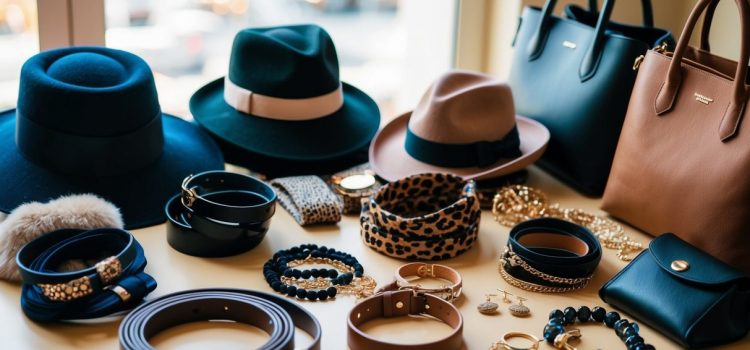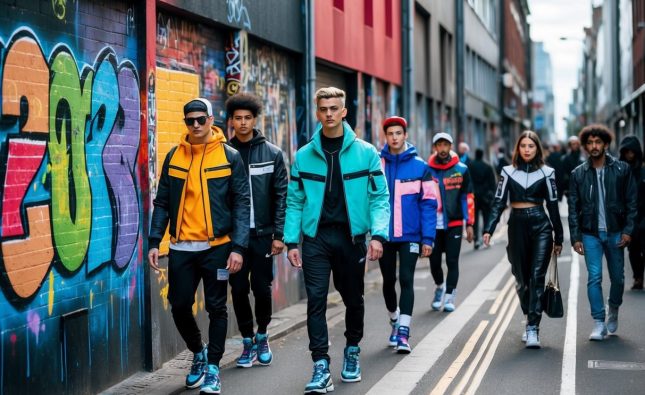
Accessorizing can transform a simple outfit into a stylish statement. It allows individuals to express their personality and add flair to their overall look. Effective accessorizing involves choosing items that complement the outfit’s colors, styles, and occasion.

The right accessories can enhance an outfit’s visual appeal without overpowering it. Simple additions like a statement necklace or a structured bag can elevate everyday attire. Understanding the balance between simplicity and personality is key to mastering the art of accessorizing.
Different occasions call for different approaches to accessorizing. For casual outings, light and playful accessories work well, while formal events may require more sophisticated and elegant pieces. Knowing how to adapt accessories to various situations ensures a polished and cohesive appearance.
Understanding Accessory Basics
Accessories play a crucial role in enhancing an outfit, providing an opportunity for personal expression. By understanding the different types of accessories and how to pair them effectively, a person can elevate their style significantly.
Types of Accessories
Accessories fall into several categories, each serving a unique purpose. Common types include:
- Jewelry: Necklaces, bracelets, earrings, and rings add sparkle and can reflect personal style.
- Bags: Handbags, backpacks, and clutches not only serve functional purposes but also contribute to aesthetic appeal.
- Scarves: Versatile and functional, scarves can add color and texture to any outfit.
- Belts: These can define the waist and create shape, as well as add a touch of style.
- Hats: They provide protection from the elements while also serving as a fashion statement.
Matching Accessories with Outfits
Matching accessories with outfits requires attention to color, texture, and style. Color coordination is key; accessories should either complement or contrast effectively with the clothing.
- For neutral outfits, bold accessories can create an eye-catching focal point.
- Patterns in clothing may require simpler accessories to avoid clashing.
- Consider the occasion; formal events call for elegant jewelry, while casual outings can embrace playful or quirky pieces.
Keep in mind the color wheel for assistance in pairing hues that harmonize, like complementary colors, which can balance an outfit visually.
Selecting the Right Scale and Proportion
The size and scale of accessories should align with the wearer’s body frame and the outfit’s silhouette.
- Delicate jewelry suits smaller frames, while larger pieces may overpower them.
- Similarly, oversized handbags may look disproportionate on a petite individual.
- Consider the outfit’s proportions; for voluminous clothing, more structured accessories maintain balance.
A good rule of thumb is to match the scale of the accessories with the outfit and body type. This ensures a coherent and polished appearance.
Accessorizing for Different Occasions
Choosing the right accessories can elevate an outfit, making it suitable for various events. Understanding the nuances of accessorizing for different occasions is essential for achieving a polished look.
Casual Outfits
For casual outfits, accessories should enhance comfort and personal style. Simple items like canvas tote bags or crossbody bags add practicality without overwhelming the look.
Jewelry can be minimalist: delicate necklaces, small hoop earrings, or charm bracelets work well. Footwear like sneakers or ballet flats complements the relaxed vibe.
Watches and lightweight scarves can also serve as functional accents. When selecting colors, opt for earthy tones or pastels, which maintain an effortless feel. Layering accessories can add dimension without looking cluttered.
Business Attire
Accessories in business attire should convey professionalism while allowing for personal expression. Structured bags, such as leather totes or briefcases, are essential. They blend functionality with a polished appearance.
Jewelry should be subtle: stud earrings, simple bracelets, or classic watches are appropriate. Avoid overly flashy items that may distract from the overall outfit.
Belts can define the waist and polish tailored looks. Scarves can also be incorporated for a touch of elegance.
Colors should be neutral or muted, allowing the attire to be the focal point. Striking the right balance between style and professionalism is key in this setting.
Evening Wear
Evening wear allows for bolder, more glamorous accessories. Statement pieces like chandelier earrings or chunky necklaces can elevate a simple dress.
Clutches or metallic handbags are ideal for adding sophistication. Opt for luxurious materials like satin or embellished fabrics to enhance the ensemble.
Footwear should be more formal, such as stiletto heels or sleek ankle boots. Incorporating layers, like shawls or wraps, can add elegance while providing warmth.
Consider the color palette; rich jewel tones or metallics often work well. Remember, the goal is to create a cohesive look that radiates confidence and sophistication.
Color Coordination and Contrast

Color coordination and contrast play vital roles in creating a cohesive outfit. Mastering these elements can elevate a look, making it visually appealing and stylish. Understanding how to mix colors effectively can enhance personal expression through fashion.
Complementary Colors
Complementary colors are those that sit opposite each other on the color wheel. When paired, they create a striking contrast that can grab attention. For example, blue and orange or red and green work well together.
To incorporate complementary colors effectively, choose one dominant color and use the other as an accent. This allows for balance. Accessories such as bags or shoes can showcase these accent colors.
It’s essential to maintain harmony, so consider using neutral shades to ground the outfit. This strategy can prevent the look from becoming overwhelming.
Monochromatic Looks
Monochromatic looks involve choosing one color and varying its shades and tints. This approach creates a unified and sophisticated appearance. Darker shades can provide a slimming effect, while lighter tones can convey freshness.
To achieve a successful monochromatic outfit, select pieces in different materials or patterns. For instance, combining a navy sweater with lighter denim or a navy skirt adds depth. Accessories should also follow this color scheme for cohesiveness.
Tips for this style include using textures strategically. Mixing knits, silks, and cottons can add interest without introducing new colors.
Using Patterns and Textures
Patterns and textures can enhance color coordination. Incorporating them adds dimension and personality to an outfit. When working with patterns, ensure that they don’t clash with the color scheme.
A floral dress paired with a solid cardigan can create balance. On the other hand, pairing stripes with polka dots requires careful consideration of scale to maintain visual harmony.
Textures should also complement the chosen colors. A suede handbag can elevate an outfit with denim and cotton. Mixing textures can create an engaging look while keeping the color palette cohesive.
Maintaining and Storing Accessories
Proper maintenance and thoughtful storage prolong the life of accessories. Keeping them in optimal condition ensures they remain stylish and ready for use.
Regular Care
Regular care is essential for maintaining the quality of accessories. Jewelry should be cleaned periodically to prevent tarnish and dirt buildup. A soft cloth can be used for metal pieces, while a mixture of mild soap and warm water works well for gemstones.
For handbags and shoes, applying protective sprays can guard against stains and wear. Leather items need conditioning treatments every few months to prevent cracking.
It is also important to inspect accessories for signs of damage. Replacing broken components promptly can prevent further issues. Regular care leads to longevity and sustained aesthetic appeal.
Storage Solutions
Storing accessories properly can prevent damage and misplacement. For jewelry, consider using a dedicated organizer with compartments. Doing so keeps pieces separate and minimizes scratching.
Handbags should be stored upright in a dust bag to maintain their shape. Shoes can benefit from being kept in their original boxes or a dedicated shoe cabinet.
Using clear bins allows easy visibility while protecting items from dust. For scarves and belts, a dedicated hanger can simplify access and organization.
Implementing these storage solutions enhances accessibility and preserves the integrity of accessories while keeping spaces tidy.












